A few months back, a new pair of shoes and a special cut of fabric from New York had me searching for a suitable 1940s dress pattern.
Of course, I couldn't make things easy for myself, because when I came across the middle image sourced from The Haslam System of Dresscutting over at Mrs. Depew Vintage, I couldn't get it out of my mind. Which meant that I would have to learn how to use these printed rulers and the accompanying diagrams, and hope for the best.
There is not a whole lot of online information about how to use this particular system of drafting clothing to your specific size; just the minimal directions that come with the "book of drafting." I have previously used the Eclair-Coupe Paris system for this project, but the Haslam system had me stumped for a brief moment. I was so intrigued by the diagrams and unfamiliar instructions that I completely forgot about the ruler! After a very frustrating hour, I stepped away, and the solution quickly presented itself. I was missing an entire piece of the puzzle!
After that ridiculous and rather embarrassing attempt was out of the way, things went a whole lot smoother.
The basic idea is that you take a bunch of measurements including the basics like bust, waist, and hips, but also neck, torso length, shoulder width, arm length, armhole circumference, etc. Using your own personal measurements, the theory is that your drafted dress foundation will be perfectly fitted to your particular shape. In reality, things like an erect upper back adjustment cannot be accounted for, so there will probably be minimal alterations to the final drafted pattern to perfectly fit each unique body shape. I was also completely unsure how much ease might be included, and I couldn't find any mention of it anywhere in the directions.
It certainly was fun to see a basic dress block emerge from making a series of dots on a piece of paper with the help of the special ruler. Numbered dots correspond to the body measurements that have been taken of the individual to be fit. It's pretty genius, actually. The ruler is inclusive of children and adults, from a 24" to a 50" bust.
My main confusion (after the missing ruler incident) was the sleeve. The only foundation drafting is a two piece sleeve for coats which was not what my chosen dress needed. I pushed ahead anyway, figuring a little more practice with the ruler was not going to hurt.
Here is my two piece sleeve . . .
which wasn't looking very helpful when compared to my Figure 9 sleeve. But it's a process, right?!
In the end, I just started with that long dotted line for Sleeve, Fig. 9 which looked like the best way to attempt to recreate the sleeve.
I cannot be sure if this was the intended means of drafting, but it worked out in the end.
But back to my basic dress block . . . from there, the fun begins. Using the diagrams specific to the dress figure you wish to recreate, there are quite a few changes to be made by measuring, slashing, spreading, and marking all sorts of things. But that will be for another day.
Clear as mud, right?!?

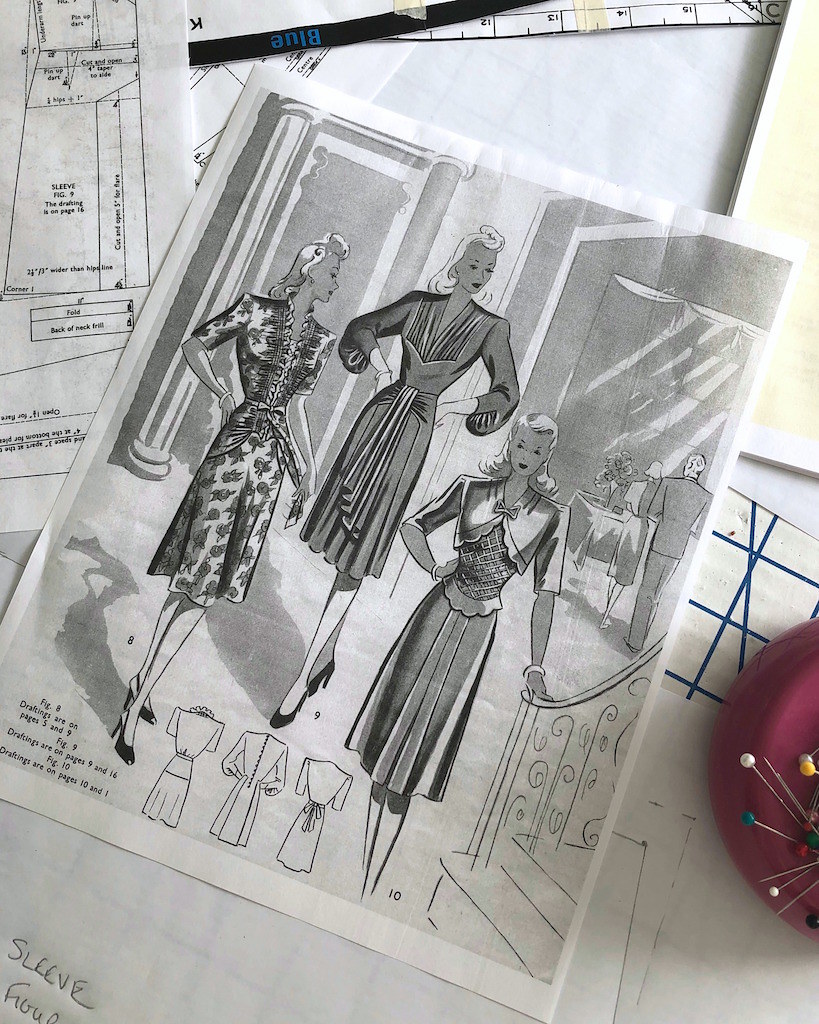
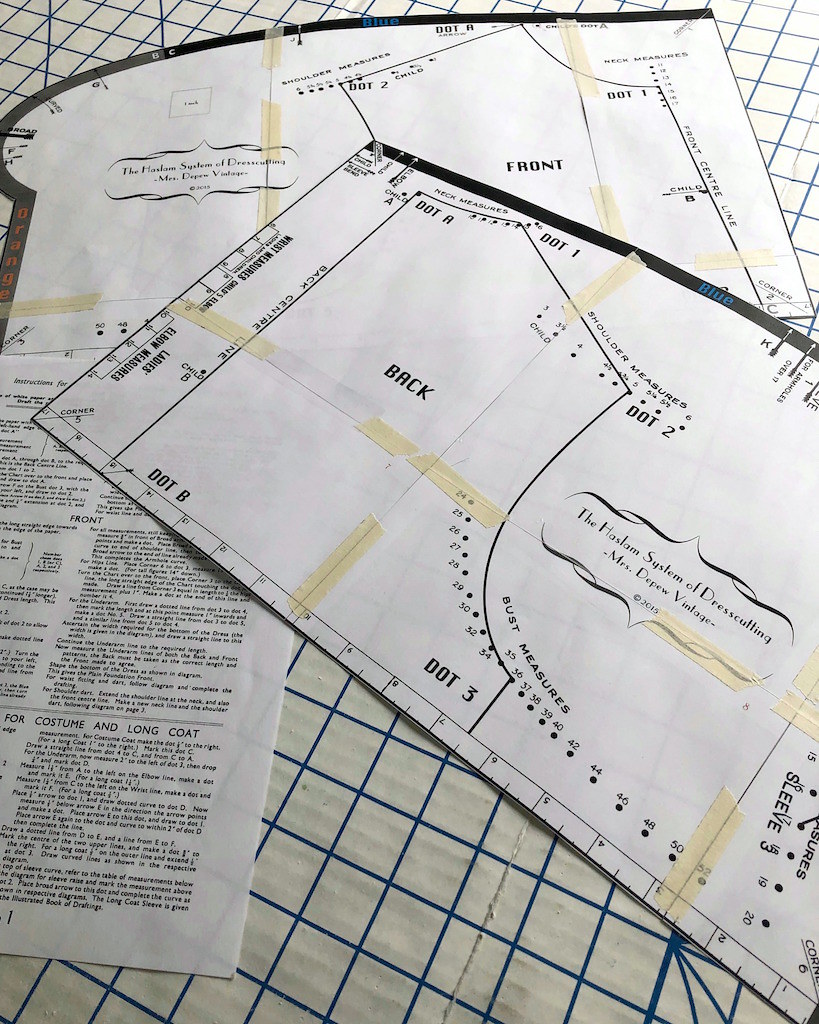
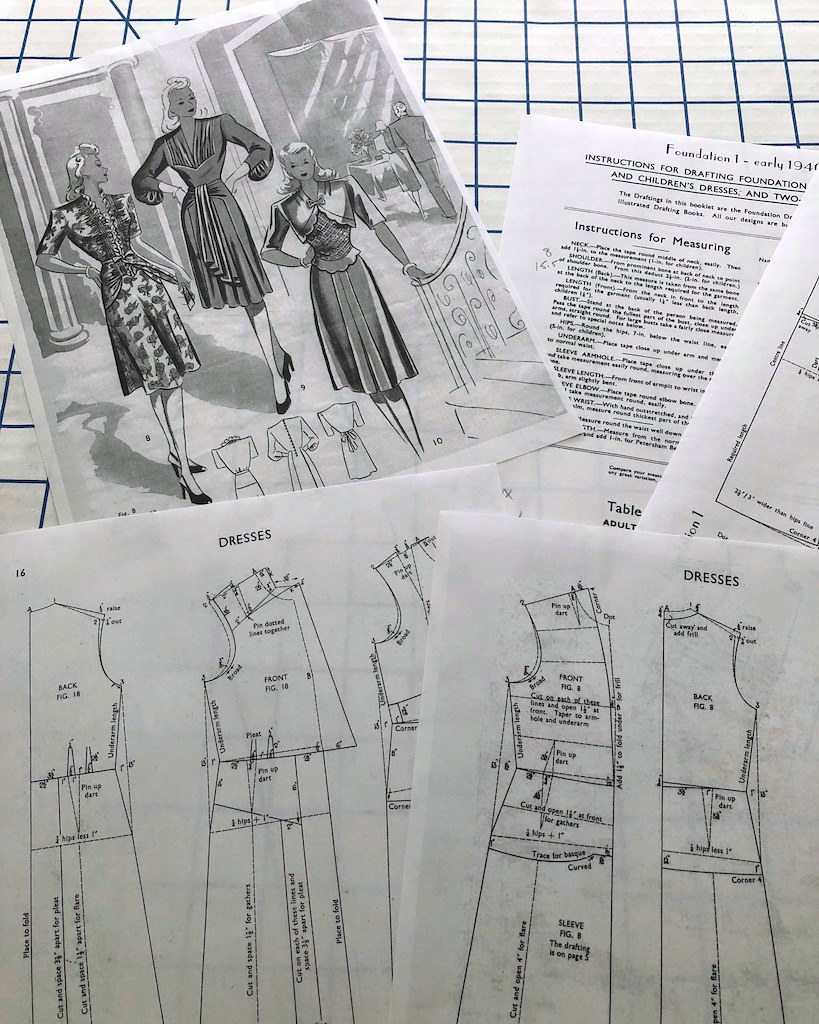

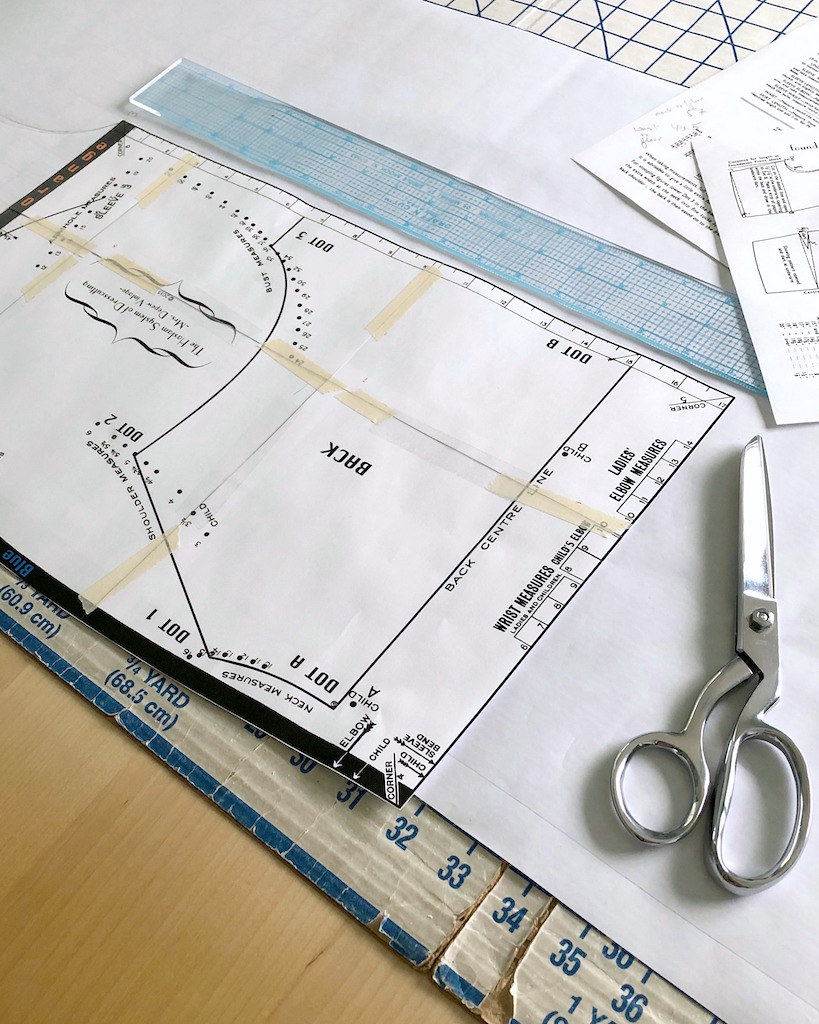

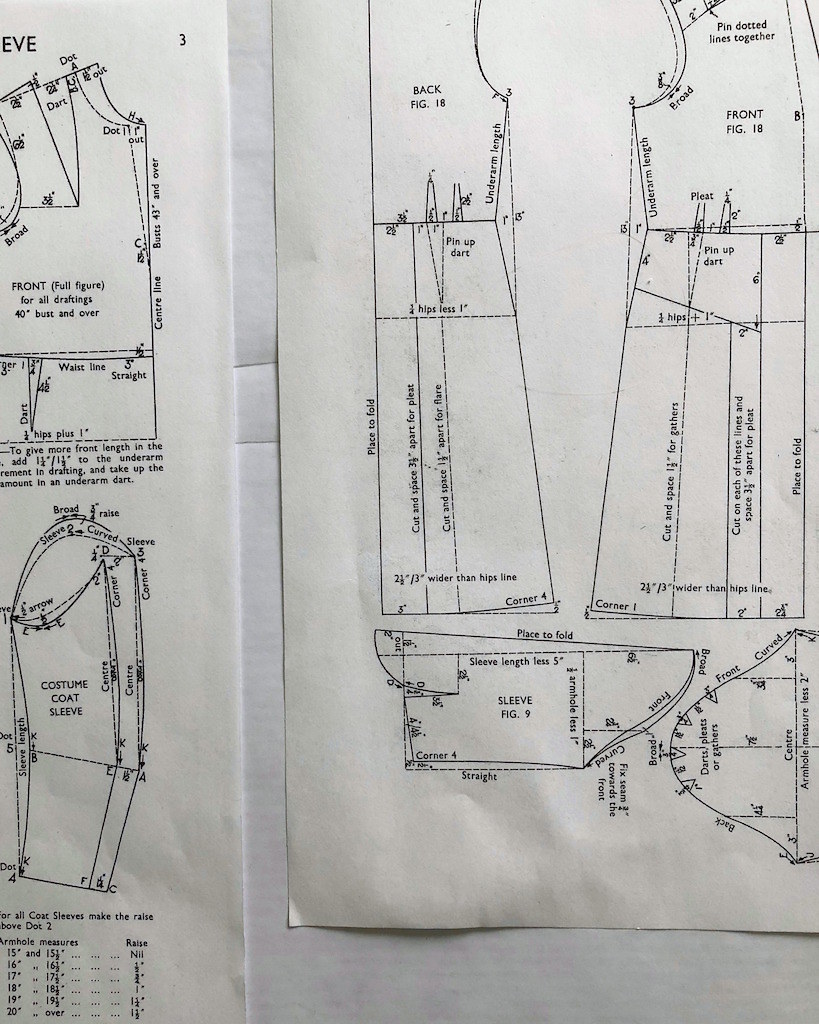
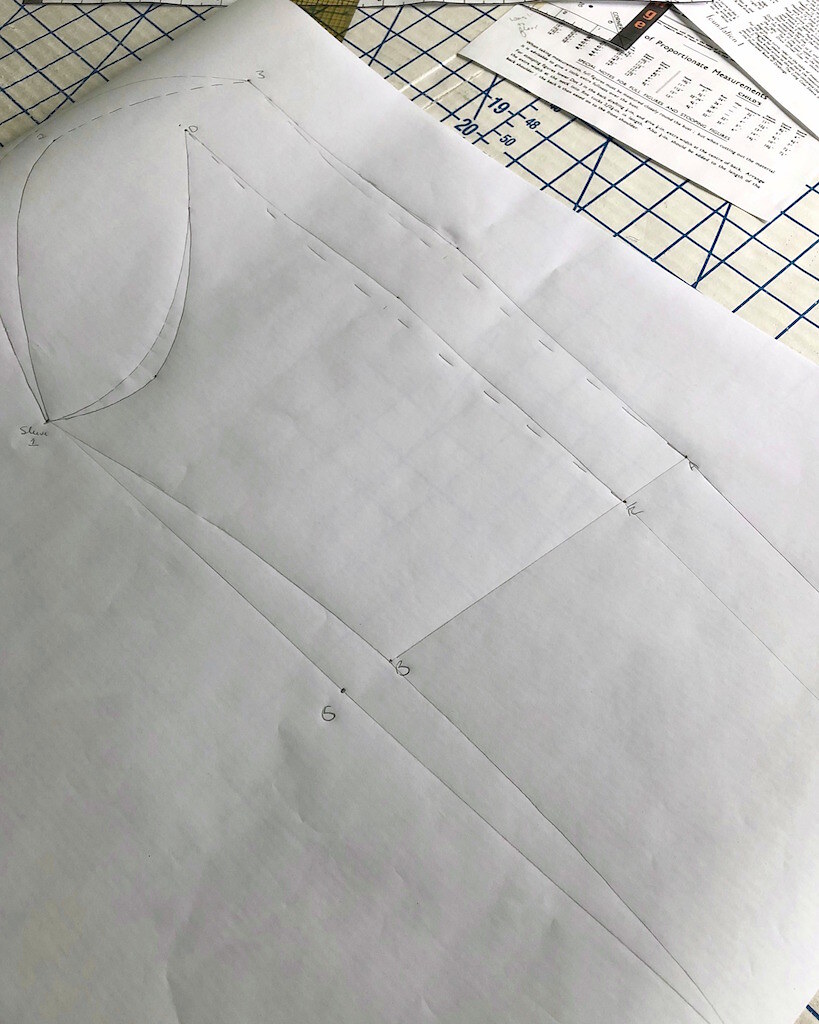
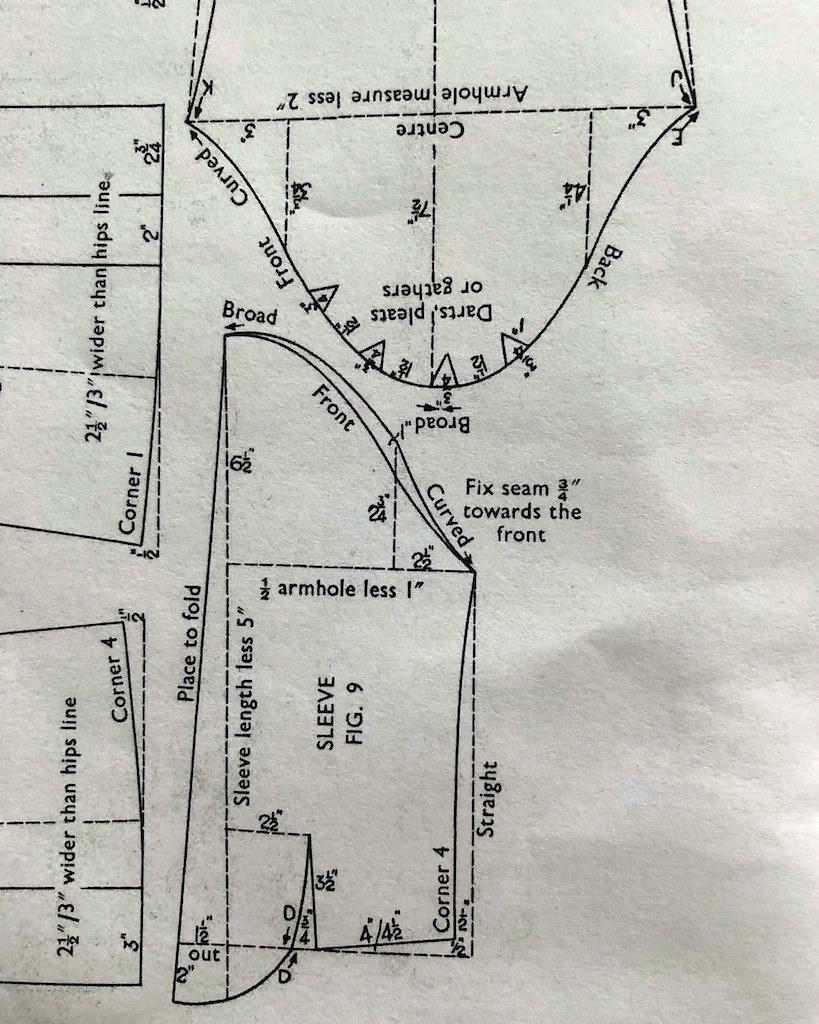
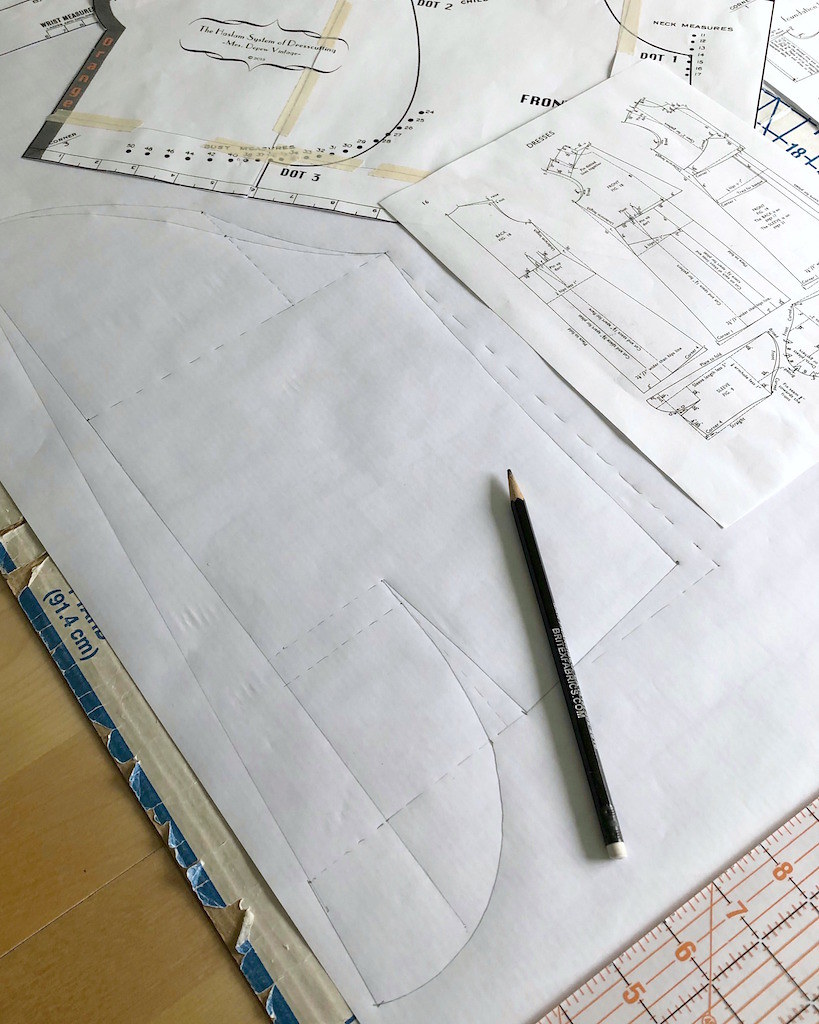

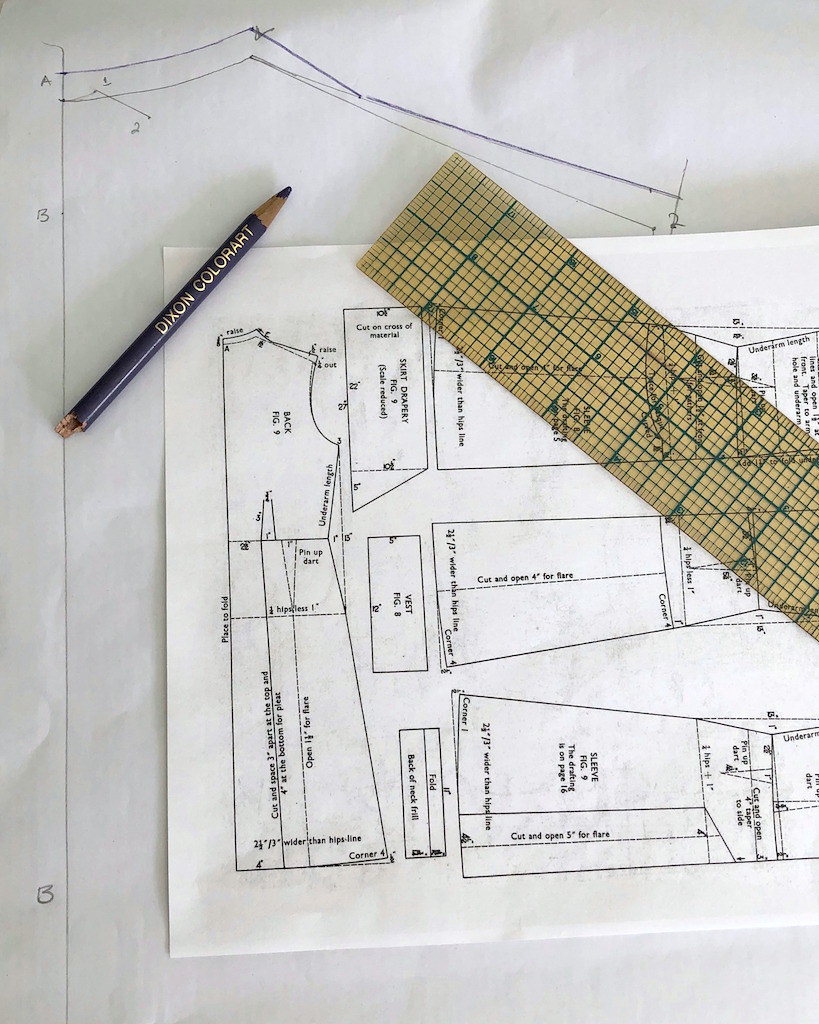
You are such a couth sleuth (I'd of stunk up the room with blue language).
ReplyDeleteOf course, this post could be construed as "frock blocking", by some, and an intriguing facet to the steeped-in-yesteryear world of Laura Mae, by others.
No need to inquire which camp I reside in regarding that issue.
One still believes you could have built the pyramids and Stonehenge with little more than a tape measure, a chalk wheel, and a few pins. These systems of old are shockingly effective at ball-parking one's physique - how ever did we wander away from utilizing such short-cuts?
The fabric is luxe. Did a former model assist in your purchasing decision?? Hmmmmmmm?
Your very own "snoody" reader
This comment has been removed by a blog administrator.
ReplyDeleteI'm very excited to see how this goes, however it goes. I've been curious about the Haslam system for a long time. Thanks for taking the plunge!
ReplyDeleteOooh! I love the Haslam system. So far, I've made two slips and a dress from it; the slips came out pretty well, but the dress has some awkwardness in the shoulder (largely because my shoulders are narrow but my arms are plump). Overall, it seems like a really, really good way of getting properly-fitting patterns!
ReplyDeleteI am ....beyond grateful to you for writing about this. I'm going to link to this on my blog so when the time comes that I pull out my Haslam set and get to the task, you will be there to hold my metaphoric hand.
ReplyDeleteIt makes about as much sense as the scale-able rulers in her other patterns (she has paper patterns now. Dang.) once you get the hang of it I hope.
I confess I have a collection of this stuff. And have used none of it.
YET!
I've found the Haslam dresscutting system more accurate then the other vintage 1920-1950 systems out there. The essential thing is to get your initial slopers as accurate as possible, which may take a few attempts. Once you've perfected that, it's basic math skills to get a working pattern. I also found having one or two old dressmaking books as references very helpful as I'm relatively still a beginner. There are no step by step instructions which was a bit daunting at first, and having those books were a great resource.
ReplyDelete